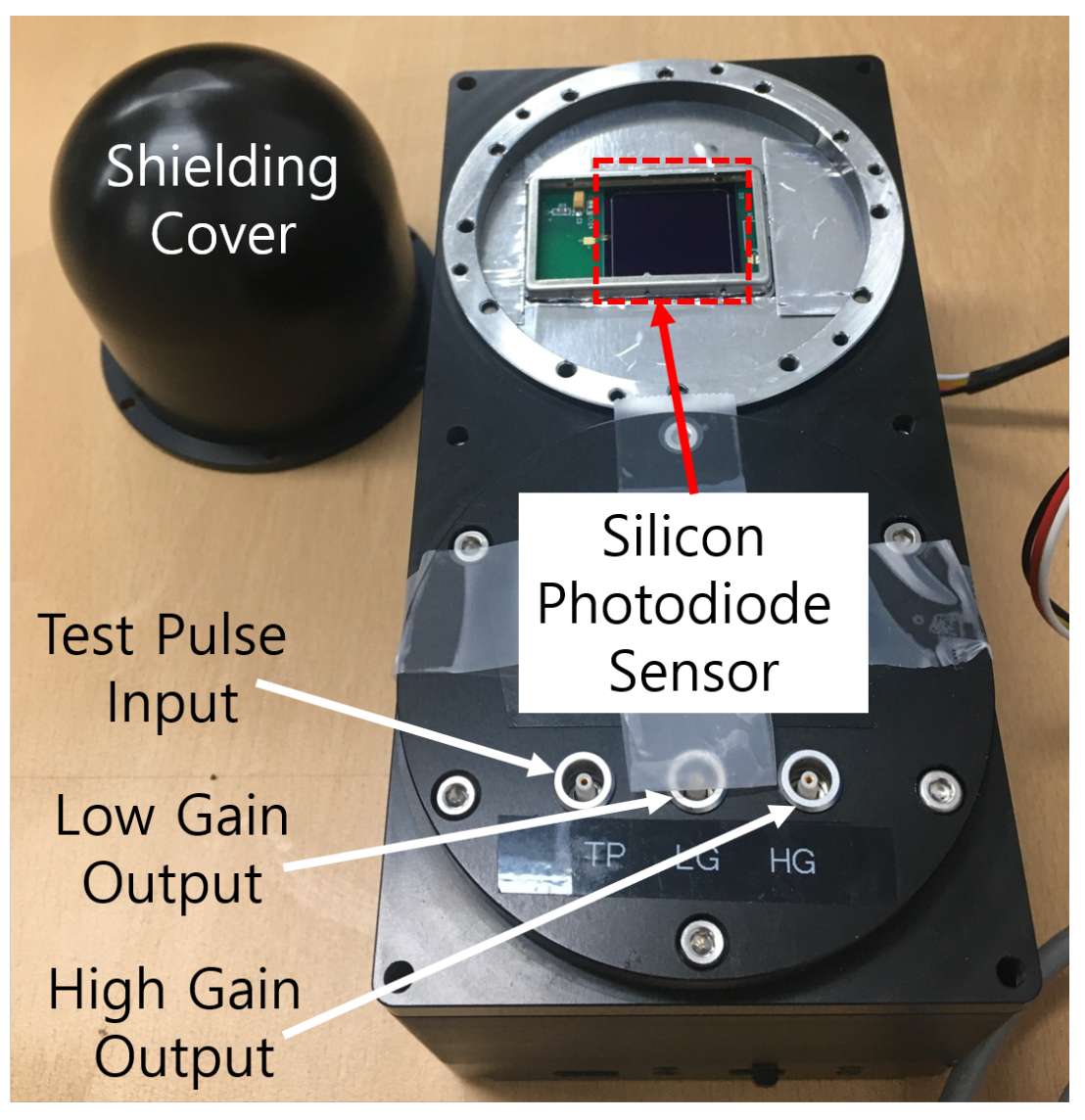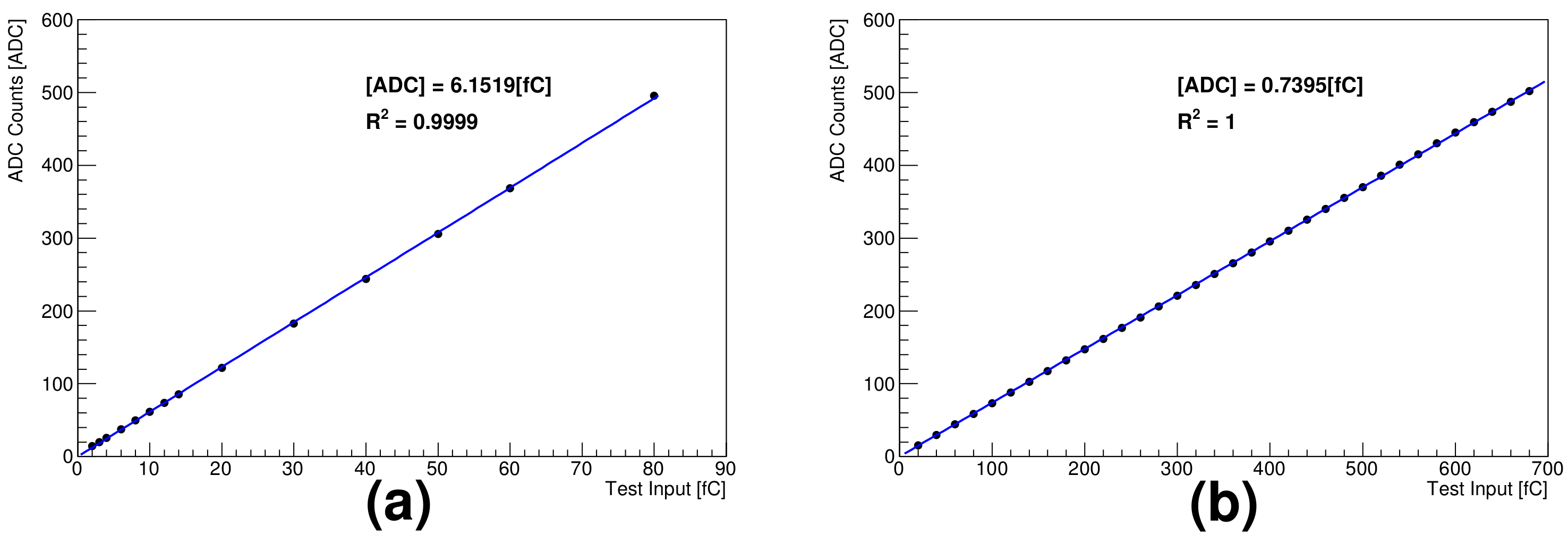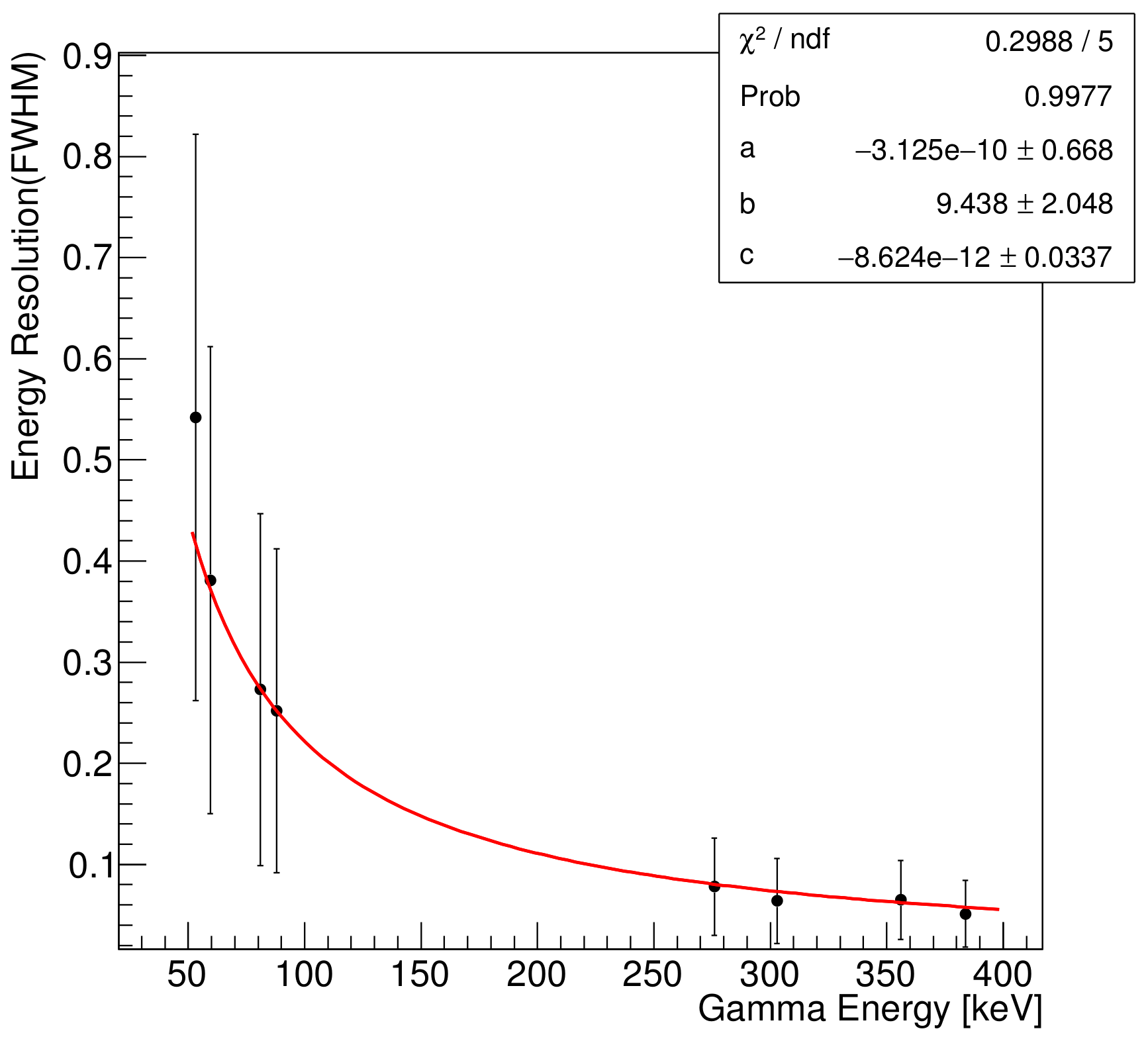A Study on the Performance of a Silicon Photodiode Sensor for a Particle Dosimeter and Spectrometer
Abstract
:1. Introduction
2. Fabricated Sensor
3. Developed Electronics
4. Experimental Results
4.1. High Gain Mode: Gamma Spectrometer
4.2. Low Gain Mode: Proton Spectrometer
5. Summary
Author Contributions
Funding
Institutional Review Board Statement
Informed Consent Statement
Acknowledgments
Conflicts of Interest
References
- Uchihori, Y.; Kitamura, H.; Fujitaka, K.; Dachev, T.P.; Tomov, B.T.; Dimitrov, P.G.; Matviichuk, Y. Analysis of the calibration results obtained with Liulin-4J spectrometer–dosimeter on protons and heavy ions. Radiat. Meas. 2002, 35, 127–134. [Google Scholar] [CrossRef]
- Hyun, H.J.; Anderson, T.; Angelaszek, D.; Baek, S.J.; Copley, M.; Coutu, S.; Han, J.H.; Huh, H.G.; Hwang, Y.S.; Im, S.; et al. Performances of photodiode detectors for top and bottom counting detectors of ISS-CREAM experiment. Nucl. Instrum. Methods Phys. Res. Sect. A Accel. Spectrometers Detect. Assoc. Equip. 2015, 787, 134–139. [Google Scholar] [CrossRef]
- Jeon, H.B.; Kang, K.H.; Park, H.; Hyun, H.J. Study of the Design Optimization of AC-coupled Single-sided Silicon Strip Sensors. Korean Phys. 2015, 66, 1451–1456. [Google Scholar] [CrossRef]
- Lee, S.C.; Jeon, H.B.; Kang, K.H.; Park, H.; Lee, D.H.; Lee, M.W.; Park, K.S. Photo-Responses of Silicon Photodiodes with Different ARC Thicknesses for Scintillators. J. Korean Phys. Soc. 2019, 75, 1038–1042. [Google Scholar] [CrossRef]
- Amptek, Inc. Datasheet Charge Sensitive Preamplifier and Shaping Amplifier A225. Available online: https://www.amptek.com/-/media/ametekamptek/documents/resources/specs/a225.eps?la=en&revision=718850f2-d24d-4d65-ba3f-040406c37b6e (accessed on 29 October 2021).
- Wigmans, R. Calorimetry-Energy Measurements in Particle Physics, 2nd ed.; Oxford University Press: Oxford, UK, 2017; ISBN 978-0198786351. [Google Scholar]
- Ceccucci, A. LKr calorimetry for the CP violation experiment NA48: Recent test beam results. Nucl. Instrum. Methods Phys. Res. Sect. A Accel. Spectrometers Detect. Assoc. Equip. 1995, 360, 224–227. [Google Scholar]
- Lee, S.C.; Jeon, H.B.; Kang, K.H.; Park, H. Study of Silicon PIN Diode Responses to Low Energy Gamma-Rays. J. Korean Phys. Soc. 2016, 69, 1587–1590. [Google Scholar] [CrossRef]
- Yan, J.; Liu, R.; Li, C.; Jiang, L.; Lu, X.X.; Zhu, T.H. Energy calibration of a BC501A liquid scintillator using a γ-γ coincidence technique. Chinese Phys. 2010, 34, 993–997. [Google Scholar]
- Scherzinger, J.; Jebali, R.A.; Annand, J.R.M.; Fissum, K.G.; Hall-Wilton, R.; Kanaki, K.; Lundin, M.; Nilsson, B.; Perrey, H.; Rosborg, A.; et al. The light-yield response of a NE-213 liquid-scintillator detector measured using 2–6 MeV tagged neutrons. Nucl. Instrum. Methods Phys. Res. Sect. A Accel. Spectrometers Detect. Assoc. Equip. 2016, 840, 121–127. [Google Scholar] [CrossRef] [Green Version]
- Agostinelli, S.; Allison, J.; Amako, K.; Apostolakis, J.; Araujo, H.; Arce, P.; Asai, M.; Axen, D.; Banerjee, S.; Barrand, G.; et al. GEANT4–a simulation toolkit. Nucl. Instrum. Methods Phys. Res. Sect. A Accel. Spectrometers Detect. Assoc. Equip. 2003, 506, 250–303. [Google Scholar] [CrossRef] [Green Version]
- Kim, K.R.; Park, B.S.; Lee, H.R.; Kang, K.S.; Kang, S.W.; Choi, B.H. 50 MeV proton beam test facility for low flux beam utilization studies of PEFP. In Proceedings of the Agricultural Policy Advisory Committee (APAC), Gyeongju, Korea, 22–26 March 2004; pp. 441–443. [Google Scholar]
- Knoll, G.F. Radiation Detection and Measurement, 4th ed.; Wiley: Hoboken, NJ, USA, 2010; ISBN 978-0-470-13148-0. [Google Scholar]












| Source | Gamma Energy [keV] | Pedestal Mean [ADC] | Pedestal Sigma [ADC] | Signal Mean [ADC] | Signal Sigma [ADC] | (FWHM) | SNR |
|---|---|---|---|---|---|---|---|
| 53.2 | 12.14 | 1.6 | 12.5 | 2.9 | 0.55 ± 0.28 | 7.8 | |
| 59.5 | 11.75 | 1.1 | 14.1 | 2.3 | 0.38 ± 0.23 | 12.9 | |
| 81 | 12.14 | 1.6 | 18.7 | 2.2 | 0.28 ± 0.18 | 11.7 | |
| 88 | 12.28 | 1.6 | 20.7 | 2.2 | 0.25 ± 0.16 | 12.9 | |
| 276 | 12.14 | 1.6 | 76.3 | 2.5 | 0.08 ± 0.05 | 47.7 | |
| 303 | 12.14 | 1.6 | 84.3 | 2.3 | 0.06 ± 0.04 | 52.7 | |
| 356 | 12.14 | 1.6 | 99.4 | 2.7 | 0.06 ± 0.04 | 62.1 | |
| 384 | 12.14 | 1.6 | 108.4 | 2.4 | 0.05 ± 0.03 | 67.8 |
Publisher’s Note: MDPI stays neutral with regard to jurisdictional claims in published maps and institutional affiliations. |
© 2021 by the authors. Licensee MDPI, Basel, Switzerland. This article is an open access article distributed under the terms and conditions of the Creative Commons Attribution (CC BY) license (https://creativecommons.org/licenses/by/4.0/).
Share and Cite
Kim, B.; Nam, U.-W.; Kim, S.; Youn, S.; Park, W.-K.; Sohn, J.; Kim, H.J.; Lee, S.-W.; Hwang, J.; Ye, S.-J.; et al. A Study on the Performance of a Silicon Photodiode Sensor for a Particle Dosimeter and Spectrometer. Sensors 2021, 21, 8029. https://doi.org/10.3390/s21238029
Kim B, Nam U-W, Kim S, Youn S, Park W-K, Sohn J, Kim HJ, Lee S-W, Hwang J, Ye S-J, et al. A Study on the Performance of a Silicon Photodiode Sensor for a Particle Dosimeter and Spectrometer. Sensors. 2021; 21(23):8029. https://doi.org/10.3390/s21238029
Chicago/Turabian StyleKim, Bobae, Uk-Won Nam, Sunghwan Kim, Sukwon Youn, Won-Kee Park, Jongdae Sohn, Hong Joo Kim, Seh-Wook Lee, Junga Hwang, Sung-Joon Ye, and et al. 2021. "A Study on the Performance of a Silicon Photodiode Sensor for a Particle Dosimeter and Spectrometer" Sensors 21, no. 23: 8029. https://doi.org/10.3390/s21238029
APA StyleKim, B., Nam, U.-W., Kim, S., Youn, S., Park, W.-K., Sohn, J., Kim, H. J., Lee, S.-W., Hwang, J., Ye, S.-J., Jun, I., & Choi, Y.-J. (2021). A Study on the Performance of a Silicon Photodiode Sensor for a Particle Dosimeter and Spectrometer. Sensors, 21(23), 8029. https://doi.org/10.3390/s21238029







